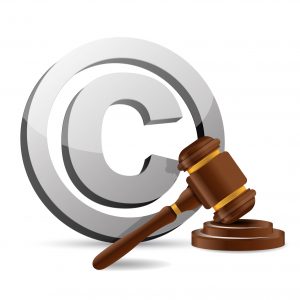Celebrating Public Domain Day 2019
What notable works entered the public domain in the United States this week?
 New Year’s Day this year brought an extra special treat. It is the first year we’ve seen published works enter the public domain after a 20-year moratorium — celebrated as Public Domain Day. Works in the public domain are free to use without permission and are critical building blocks for new knowledge and culture.
New Year’s Day this year brought an extra special treat. It is the first year we’ve seen published works enter the public domain after a 20-year moratorium — celebrated as Public Domain Day. Works in the public domain are free to use without permission and are critical building blocks for new knowledge and culture.
A quick review: copyright term in the United States lasts for the life of the author plus 70 years, or 95 years for most corporate works, thanks to the Copyright Term Extension Act of 1998. Under this Act, Congress placed a moratorium on new works entering the public domain for 20 years — because it extended the term from life plus 50 to life plus 70 — and created a complicated calculation in which works published in 1923 were presumed to be under copyright. Actually determining what works are in copyright or not for older works is incredibly complex, depending on whether the copyright owners complied with then-required “formalities” (like registration and notice) and whether the work was renewed (previous copyright terms in the United States provided for a single term, with the possibility of a single renewal), but for most people, it was safest to assume that works published in 1923 were still under copyright. While some institutions have gone through the painstaking research to determine if some newer works complied with all of the required formalities or are actually in the public domain, it takes a lot of time and resources. If you really want to know whether a work is still under copyright, though (and want to do the research as to whether formalities and renewals occurred), this is a great chart to rely on (and illustrates the complexities and permutation of copyright term). As a result of the efforts it takes to determine the copyright status and the safe legal marker of the 1923 date, many have long looked forward to January 1, 2019, the day that it would finally be safe to declare all 1923 published works in the public domain.
Those who hold a copy of the works that entered the public domain on January 1 can digitize the copy and post it online, free for anyone to use or reuse. HathiTrust, for example, has made over 50,000 titles from 1923 available from its digital library. Google Books will provide full text for its 1923 titles rather than the snippet view provided for in copyright works. A number of libraries will similarly be digitizing and making available 1923 works in their collections, often representing a unique item that is not readily available in other collections. By making these public domain works available online, individuals who do not have the resources or ability to physically travel to the actual location of the work can still access them, greatly expanding their reach. It also allows libraries and archives to make works that are brittle or in danger of deterioration — and generally therefore out of circulation — widely available.

Legal AI: 3 Steps Law Firms Should Take Now
While, of course, the entry of new works to the public domain is great news, we should take a moment to recognize that some works are lost forever and therefore not everything from 1923 will be available. Because of the lengthy term of copyright — 1923 was 95 years ago, after all — some works have been long forgotten and not well-preserved. Old films and sound recordings, in particular, may have disintegrated. Books have long gone out of print and may have similarly deteriorated or been thrown out. Thus, while many 1923 works will be made available, some may never be found or restored, a loss for our cultural heritage. Still, the ones that are still in existence and made available can lead to rediscovery of old works, promote educational opportunities and research, and provide the building blocks for new creation.
So what notable works entered the public domain in the United States this week? Duke’s Center for the Study of the Public Domain has a great roundup (including links to many of the works), but here are some of my favorites — or at least ones I’m familiar with: Charlie Chaplin’s film The Pilgrim, Cecil B. DeMille’s film The Ten Commandments, Kahlil Gibran’s book The Prophet, Agatha Christie’s Murder on the Links, e.e. cummings’s Tulips and Chimneys, Edith Wharton’s A Son at the Front, Hungarian composer Bela Bartok’s Violin Sonata No. 1 and 2, some 1923 compositions by well-known artists like Louis Armstrong, George Gershwin, Oscar Hammerstein, John Phillip Sousa, and others. I’m looking forward to exploring these and other, less well-known works, which will be shared by cultural heritage institutions this year. Happy Public Domain Day!
Krista L. Cox is a policy attorney who has spent her career working for non-profit organizations and associations. She has expertise in copyright, patent, and intellectual property enforcement law, as well as international trade. She currently works for a non-profit member association advocating for balanced copyright. You can reach her at kristay@gmail.com.
Sponsored

Legal AI: 3 Steps Law Firms Should Take Now

Navigating Financial Success by Avoiding Common Pitfalls and Maximizing Firm Performance

Early Adopters Of Legal AI Gaining Competitive Edge In Marketplace

Is The Future Of Law Distributed? Lessons From The Tech Adoption Curve

The Business Case For AI At Your Law Firm









